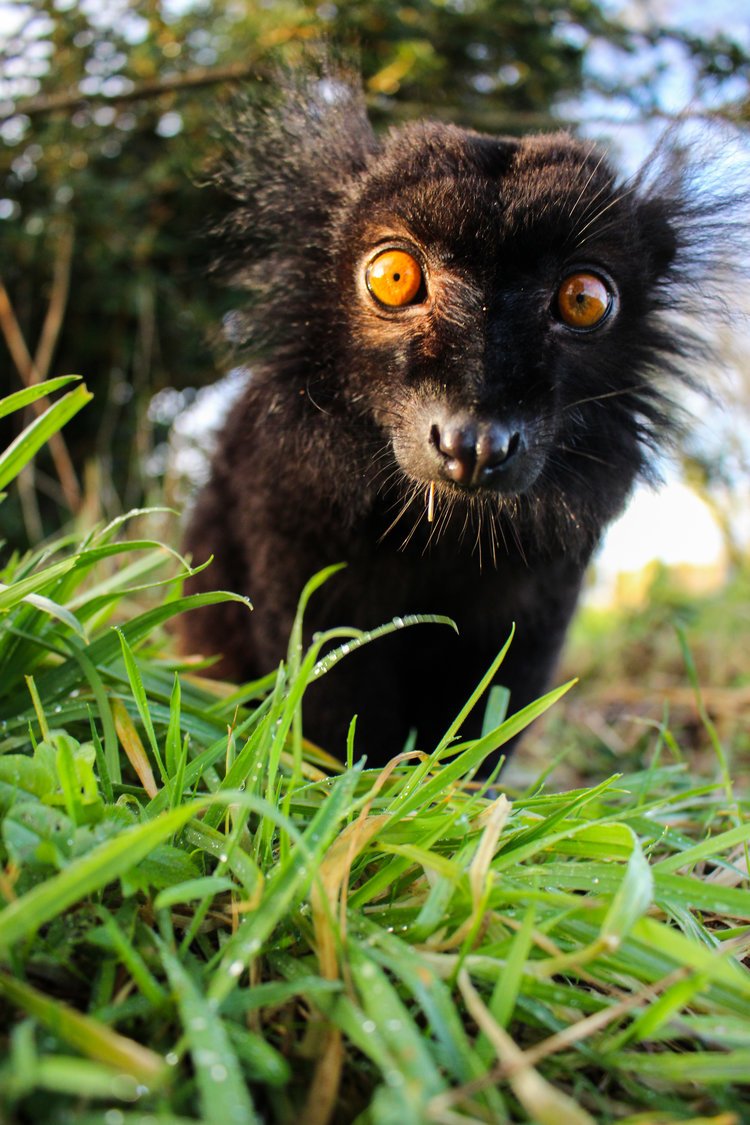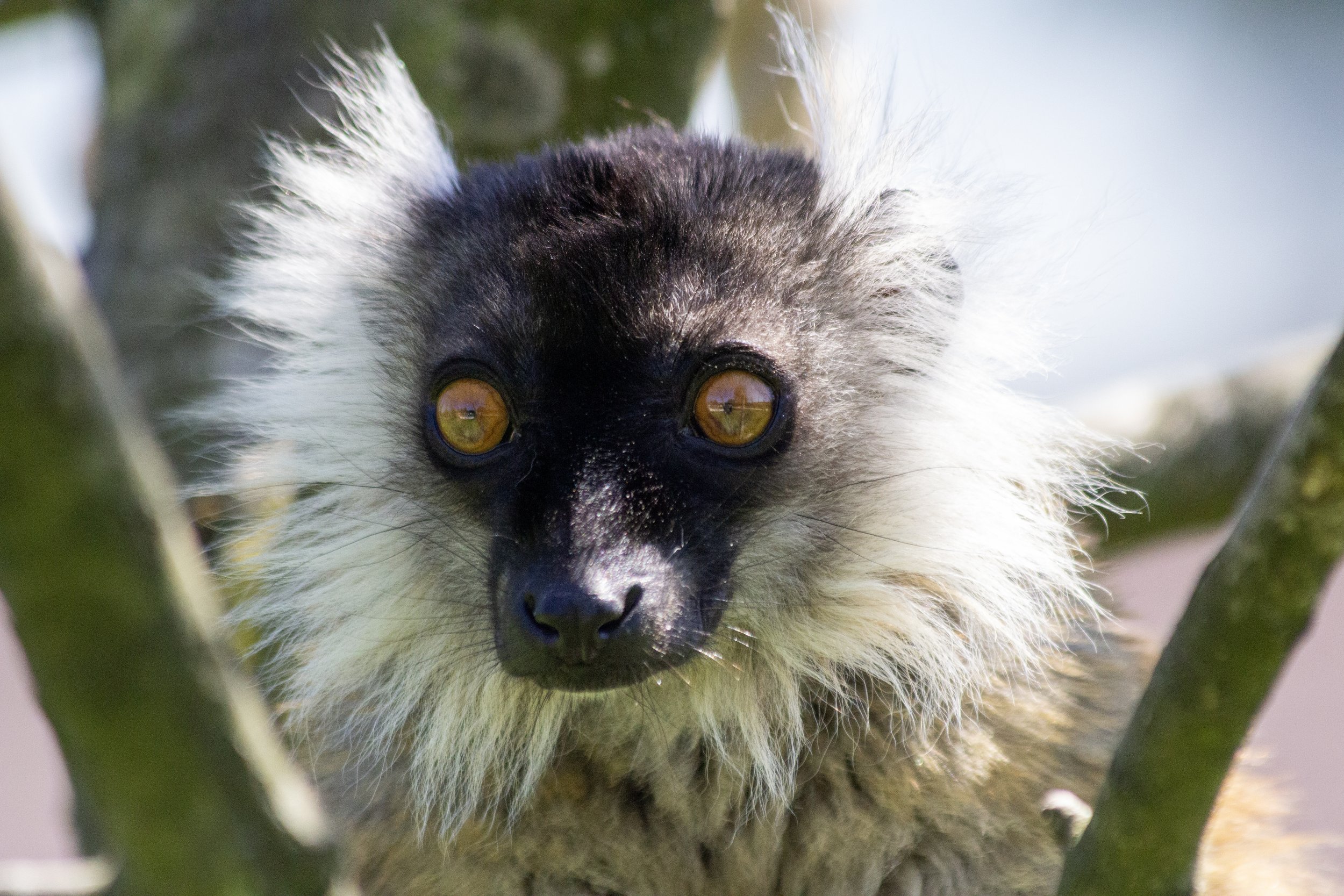
BLACK LEMUR
Eulemur macaco
Male black lemurs have a dark brown to black pelage with black tufted ears and beady yellow-orange eyes, while females look so different they were thought for a long time to be a different species. Black lemur females are tawny on the back and head; their underparts are golden-brown to rich-chestnut brown, with paler fur on the limbs, and the tail is a darker chestnut brown. The females’ ears are also dramatically tufted, but with long white hair which extends around the cheeks.
True Socialites!
Black lemurs live in groups of between 2-15 individuals, with adult males and females in equal numbers, together with their dependant offspring. The activities and movements of the group are dictated by the dominant female, and group relationships are maintained by grunts, contact calls and grooming. Home ranges extend for five to six hectares and there is considerable overlap with the ranges of neighbouring groups.
We’re Here All Day…
This species, like other lemurs, exhibits an activity pattern that is virtually unique amongst primates and rarely encountered amongst other arboreal mammals. They have activity bursts which may occur during the day and the night, though most activity occurs in the early morning and late afternoon. This activity pattern is called cathemeral, meaning ‘all hours’, contrasting with the usual distinction between nocturnal and diurnal. Foraging is concentrated in the middle and upper parts of the canopy, where this lemur feeds on fruit, flowers, leaves, fungi and occasionally invertebrates like millipedes. This primate plays an extremely important role is seed dispersal through the forests because it has such a high amount of fruit in its diet. In the dry season, nectar becomes an important part of its diet as well. During the day it forages in the understory of the canopy where it is more protected from predatory birds such as hawks, and at night is able to feed in the upper levels.
Threats & Conservation Status
As with many species of Lemur, the Black Lemur is threatened by habitat destruction, hunting for meat or fur, and by trapping for the pet trade. The black lemur is listed as vulnerable on the IUCN Red List.


